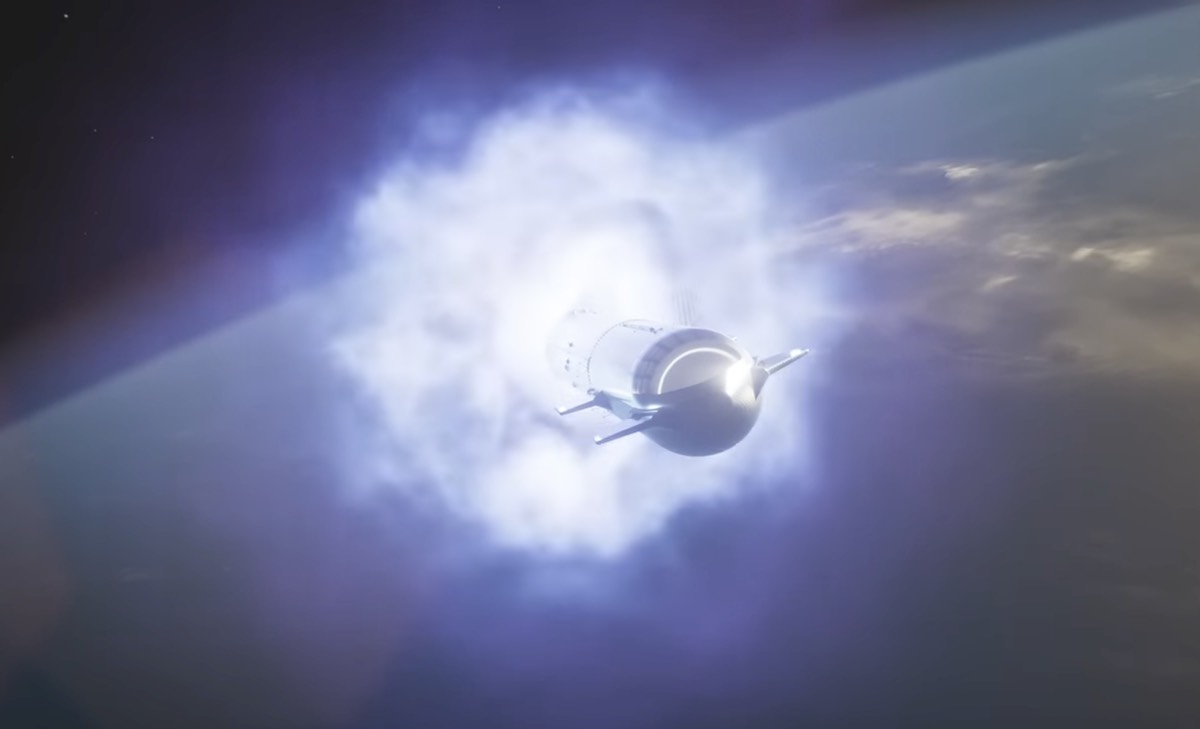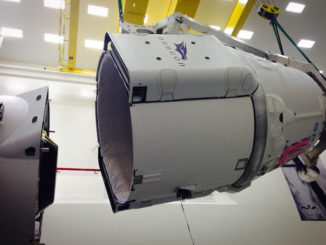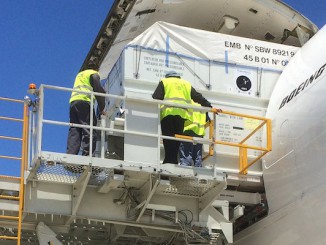
SpaceX’s Starship is set to propel itself into the record books today on its maiden flight, becoming the tallest, heaviest and most powerful rocket ever launched by humankind into space, topping a role call of famous and history-making heavy-lift launch vehicles including the mighty Saturn 5 that first took humans to the moon.
SpaceX said on Sunday that the rocket could be launched from its base in Texas during a 150-minute window opening Monday at 8 a.m. CDT (9 a.m. EDT, 1300 UTC). Alternative launch days from its Texas base are Tuesday and Wednesday.
The combined Starship and Super Heavy together stand at as towering 394 feet tall (120 meters) compared to the Saturn 5 rocket which was 363 feet (111 meters). Its 33 Raptor engines will generate more than 16 million pounds of thrust, roughly twice that of the Saturn 5.
Even NASA’s new mega-rocket, the Space Launch System, which flew for the first time in November, is dwarfed by the capability being built into Starship. SLS stands at a height of 321 feet and produces 8.8 million pounds of thrust at liftoff.
Effectively, they are two different launch beasts, the former pushing the envelope of rocket design and reusability, the latter harkening back to the past. But both have the common aim to open new pathways for human exploration to the moon and then Mars.
On its maiden flight, Starship will not go into orbit but should reach an altitude of about 146 miles (234 kilometers), circle most of the Earth and splash down in the Pacific Ocean about 140 miles (225 kilometers) from the coast of Oahu, Hawaii.
The Super Heavy booster, meanwhile, will make its own return trip to splash down in the Gulf of Mexico about 20 miles (32 kilometers) from Boca Chica Beach, the launch site in Texas.
Ultimately the Starship and Super Heavy combination constitutes a quantum leap in space technology with each stage of the launch vehicle designed to land back on Earth, much like the first stage of the SpaceX Falcon 9, for refurbishment and reuse.
In terms of total thrust, the 33 engines on the Super Heavy booster will break the record of 10 million pounds thrust from 30 engines that powered the Soviet Union’s N1 moon rocket. The N1 never reached space on four failed launches from 1969 through 1972.
Heavy-lift or super heavy-lift launch vehicles are capable of lifting between 20,000 to 50,000 kilograms, or between 44,000 pounds (20,000 tons) to 220,000 pounds (100,000 tons) into low Earth orbit. Other currently operational heavy-lift launch vehicles include Ariane 5, which launched ESA’s JUICE spacecraft to Jupiter on April 14, China’s Long March 5, Russia’s Proton-M and the Delta 4 Heavy.
In addition, the Angara A5, the Falcon 9 Full Thrust, and the Falcon Heavy, which can lift nearly to orbit, are designed to provide heavy-lift capabilities in at least some configurations but have yet to be fully proven for low Earth orbit.
Several other heavy-lift rockets are in various stages of development, including ULA’s two-stage Vulcan Centaur rocket which has been in development since 2014 and could finally make its debut in early May following numerous delays.
This fully expendable 202-foot-tall (62-meter) rocket is set to replace ULA’s Atlas 5 and Delta 4 rockets, which have been in use for the past two decades. The Vulcan Centaur is designed to lift 60,000 pounds (27.2 tons) to low Earth orbit and 14,300 pounds (6.5 tons) to geosynchronous orbit. In comparison, SpaceX’s Falcon 9 can carry 50,000 pounds (23 tons) to LEO and 18,300 pounds (8.3 tons) to geosynchronous orbit.
Other new entrants waiting in the wings are Blue Origin’s New Glenn, which is named after pioneering astronaut John Glenn. Announced in 2016, this would compete with SpaceX’s Falcon Heavy and others but seven years on, New Glenn remains to be seen in one piece.
A prototype of ESA’s new heavy lift rocket Ariane 6 is now fully assembled and sitting on the launchpad at Europe’s Spaceport in French Guiana and at a briefing last week the space agency and rocket prime contractor, ArianeGroup, said the first flight was being delayed to fourth quarter of 2023 after several issues were brought to the fore in an external review.
But of all heavy-lift vehicles the Saturn 5 remains the most iconic and is set to hold on to its title of reigning champion for orbital lift capability at least for a while longer yet. Starship will not achieve a stable orbit on the test flight this week.
NASA’s three-stage booster was used to send American astronauts to the Moon in the late 1960s and early 1970s. It could launch payloads of up to 100,000 pounds (45 tons) to the moon, or 265,000 pounds (120 tons) into Earth orbit, weighing 6.5 million pounds (3 million kilograms) fully fueled at liftoff.



